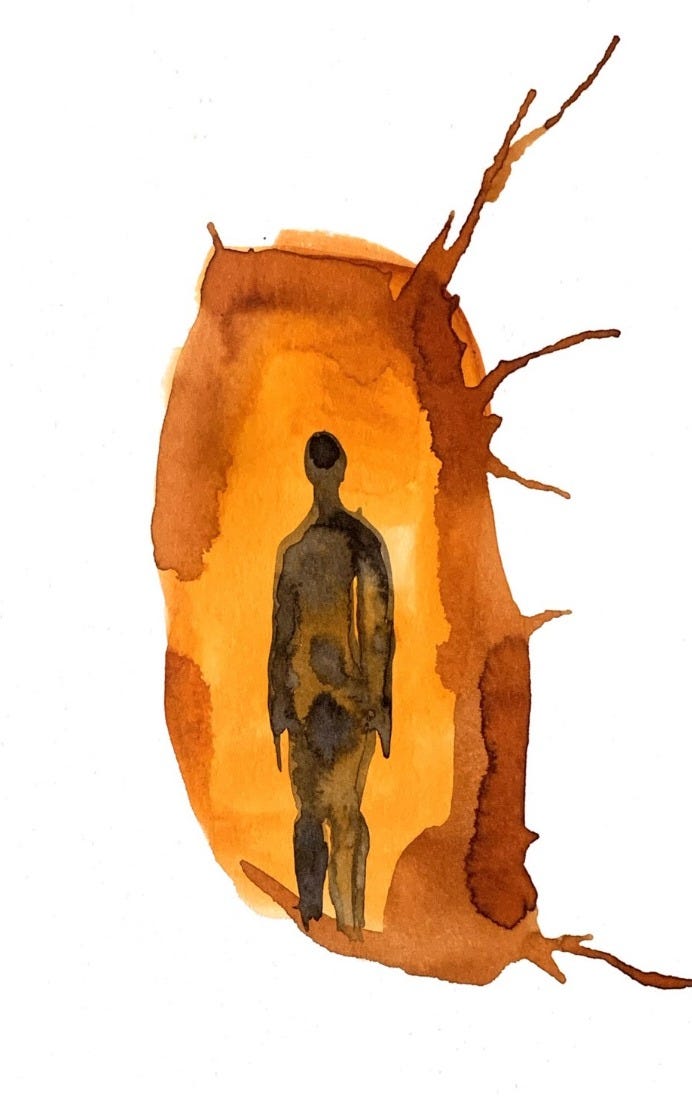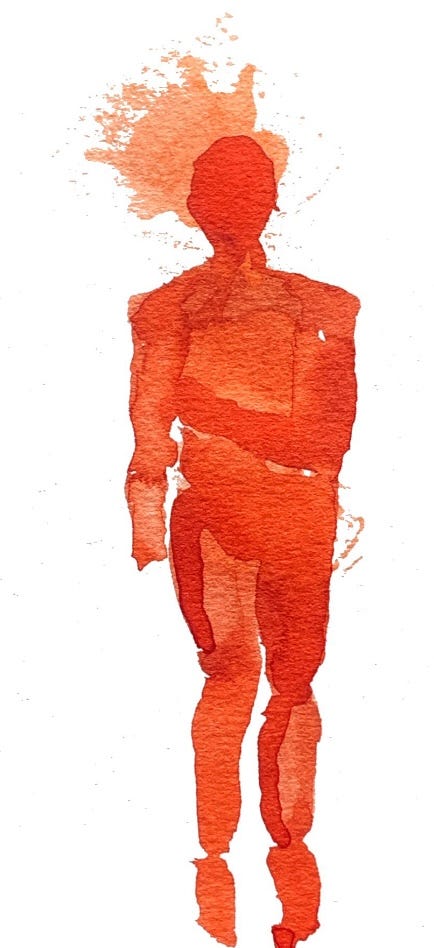’Tis But a Flesh Wound
Or, seeing the world differently after a short course in emergency medicine.
This week I took a course in emergency medicine, designed specifically for wilderness conditions. The scenarios ranged from heat exhaustion to compound fractures, heart attacks to severed arteries, snake bites to lightning burns. As students we practiced responding to these emergencies, and we practiced being the patients in distress. My best performances? Probably appendicitis and ischemic stroke.
It’s quite thrilling for the literature- and philosophy-tormented to take a class with right answers, tangible results of actions taken, including the death—if melodramatically faked—of fellow students.
In the wilderness, there’s an order of operations. Especially when you’re alone, especially when the damage is catastrophic. If you’re distracted by a head wound you might miss the broken pelvis and as you’re bandaging the head the patient dies of hypovolemic shock (extreme blood loss) because you didn’t apply the pelvic binder in time. If you’re thrown off by the fact that the patient is in a weird position, you might take so long with your spine assessment that you don’t turn them gently over to reveal a flail chest and a sucking chest wound. You simply can’t have tunnel vision.
How do you keep someone calm in an emergency? Not by distracting them, I learned. In one scenario a woman stumbled into the ambulatory triage area, missing a hand. As I checked her tourniquet and cleaned and bandaged the wound, she told me about how the car accident was all her husband’s fault, and that she doesn’t know where her daughter is. We were supposed to be on a highway in the desert, an hour from the nearest hospital. That woman felt very real to me, despite being acted out by a close friend with macabre detail and garish fake blood. She doesn’t want to be asked banal questions or placated—she wants to be handled gently and told the truth, walked through the operation.
For a movie-lover, having a slight understanding of emergency medicine (as opposed to the complete dearth of knowledge I had last week) has already changed the way I watch movies. Now when I watch The English Patient, possibly my favorite movie, I want to yell at Ralph Fiennes’ character Count Almásy: don’t leave her in the cave! Make her participate in her own rescue! She has a few broken ribs, a sprained ankle, a broken wrist. She dies of hypothermia, not pain! His love is blinding and illogical, his actions the opposite of what’s prescribed in my first aid manual.
But when reading True Grit I did recognize a good response, under the circumstances: Rooster Cogburn uses chewing tobacco to soak up the venom of little Mattie Ross’ snake bite, then gets her as soon as he possibly can to what we would call “definitive care,” which for 1870s Arkansas is a house doctor with morphine and a big knife. The arm is amputated after watching the progression of envenomation for three days; but Rooster’s cud and immediate evacuation probably saved the rest of her.
On the recommendation of one of our instructors, we watched a show last night, The Pitt, which portrays the events of an ER doctor’s day in real time. And we all shouted out in satisfaction when we knew what a pneumothorax was, or how to treat a tension pneumothorax. We tried to preempt the doctor’s diagnosis from the patient’s complaint. Pain in the right lower quadrant—with an appendix already removed, could it be an ovarian cyst or an ectopic pregnancy? A very nerdy kind of fun.
I loved this gruesome, nerve-racking, comical week. I loved figuring out the problem, or dealing with the consequences of not being able to. And I love knowing that if and when there’s an emergency, I won’t be a useless blubbering blob.






